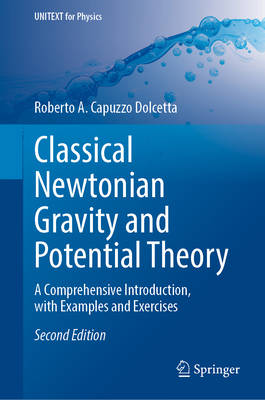
- Afhalen na 1 uur in een winkel met voorraad
- Gratis thuislevering in België vanaf € 30
- Ruim aanbod met 7 miljoen producten
- Afhalen na 1 uur in een winkel met voorraad
- Gratis thuislevering in België vanaf € 30
- Ruim aanbod met 7 miljoen producten
Classical Newtonian Gravity and Potential Theory
A Comprehensive Introduction, with Examples and Exercises
Roberto A Capuzzo DolcettaOmschrijving
This book offers a readily comprehensible introduction to classical Newtonian gravitation and potential theory, which are fundamental for understanding classical mechanics and particularly relevant to astrophysics. This enlarged and updated second edition introduces two new chapters, various newly developed exercises, and a comprehensive index. The opening chapter reviews essential elements of vector calculus and analysis, providing the formalism used in subsequent chapters. In Chapter 2, the theory of classical Newtonian gravity for a single point mass and a generic number N of point masses is presented and discussed, extending naturally to the continuous case. Chapter 3 addresses the paradigmatic case of spherical symmetry in mass density distribution (central force), introducing the useful tool of qualitative motion analysis. Chapter 4 deals with astrophysical applications, like, for instance the Jeans theory of gravitational instability. The following chapter discusses the general case of non-symmetric mass density distribution and develop classical potential theory, incorporating elements of harmonic theory, which is essential for understanding the series development of the gravitational potential. Finally, Chapter 6 discusses some relevant differences between Newtonian and relativistic gravitation. Examples and exercises throughout the book clarify various aspects of the theory presented in the book.
The book is aimed at those progressing beyond an initial bachelor s degree toward a master s degree and a Ph.D. It is also a valuable resource for postgraduates and active researchers in the field.
Specificaties
Betrokkenen
- Auteur(s):
- Uitgeverij:
Inhoud
- Taal:
- Engels
- Reeks:
Eigenschappen
- Productcode (EAN):
- 9783032130358
- Verschijningsdatum:
- 16/01/2026
- Uitvoering:
- Hardcover
- Formaat:
- Genaaid
- Afmetingen:
- 155 mm x 235 mm

Alleen bij Standaard Boekhandel
Beoordelingen
We publiceren alleen reviews die voldoen aan de voorwaarden voor reviews. Bekijk onze voorwaarden voor reviews.








